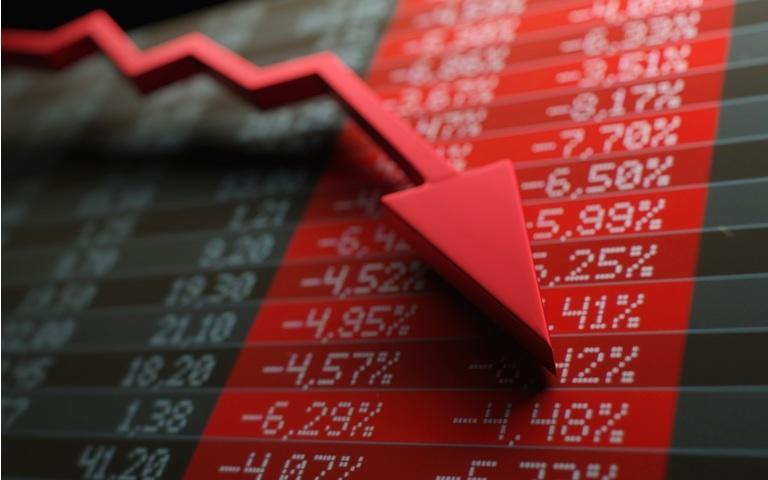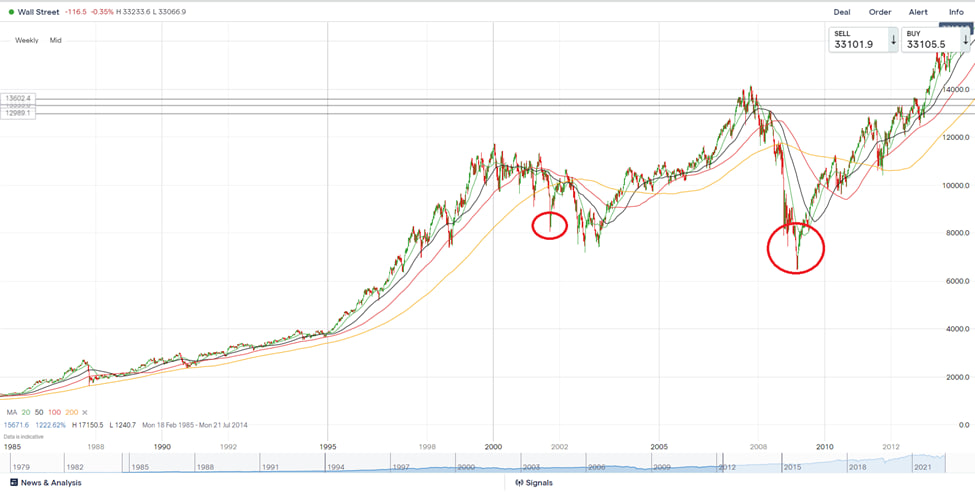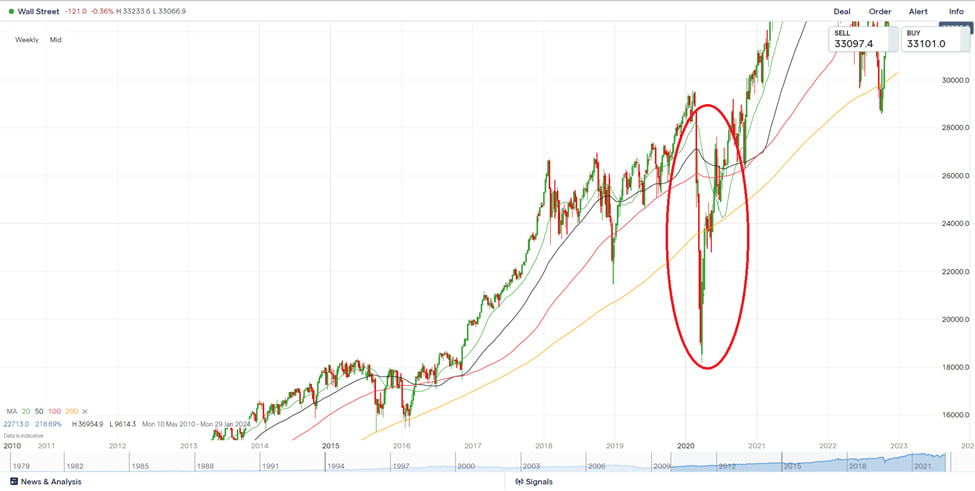How to make money when stocks are going down
- George Solotarov
- Hits: 272

Both private and institutional investors are involved in investing in stocks, among which there may be large companies, hedge funds, banks, etc. Investors bet on the growth of the value of promising stocks and the growth of investment portfolios on them, taking the risk of losses due to stock market crashes. This article will discuss what market crashes are.
What is a stock market crash?
A stock market crash is a precipitous drop in the price of most stocks of large companies over a short period of time. During a collapse, a stock index can fall 10% or more over the course of a day.
Stock market crashes are usually caused by dramatic changes in market conditions, a worsening economic outlook, rising interest rates, and the implosion of speculative bubbles. Also, a collapse can be a consequence of a "black swan" of natural or man-made nature. An example of such an event is the accident at a nuclear power plant in Fukushima, Japan.
The biggest collapses in the history of stock markets
The real danger for the invested assets can be an actual stock market collapse caused by factors that were, at the least, very difficult to predict. Such collapses can drive investors to complete bankruptcy and lead to suicidal moods, which were actively implemented, if I may say so, by speculators on Black Tuesday in 1929 and Black Monday in 1987.
The difference between a downtrend or a corrective decline and a collapse is primarily in the scale of the drop in stock prices. Fluctuations of 1-2% per day can be considered normal, while the plummeting prices of the overwhelming majority of stocks against the background of a significant decline in the world economy can be freely called a "crash".
In late October 1929, amid one of the largest economic crises in the U.S., the stock market saw a dramatic drop in stocks, leading to mass bankruptcies and mass suicides. It was the first, and perhaps most famous, "Wall Street crash" that preceded the Great Depression of the 1930s. It took about 25 years for the Dow Jones Index to recover after that, which, of course, did not please the upside speculators at all.
Also in October, but 1987, on 19, the Dow Jones fell 22.6%, caused by a larger-than-expected trade deficit in the U.S. The fall of Dow Jones entailed the collapse of the other world stock markets. There were various reasons for such a decline, but it did not have the same consequences as after the crash of 1929.
From 1995 till March 2000, tech companies were actively developing, the internet penetrated all (or almost all) corners of the globe, and the shares of internet companies soared, as a result of which the Nasdaq index grew by more than 500%, until the famous dot-com bubble burst. For the next couple of years, the index was in a prolonged downtrend, losing nearly 80% of its capitalization.
Many of those who invested in Internet stocks lost all their investments, and not all companies survived the crisis. As in the previous situation, neither the U.S. nor the rest of the world was plunged into a state similar to the "Great Depression," and after recovering financial performance, stock markets went back up.
To the list of stock market crashes, one must add the drop in indices after the September 11, 2001, terrorist attacks. Though NYSE was not damaged during the attack, it was cut off from the outer world due to the damaged communications, and both NASDAQ and NYSE did not open on the day of the attack. The opening of the exchanges on September 17 was expectedly accompanied by the collapse of the indices. The Dow Jones lost 7.1% over the day, and 14% over the first week after the attacks.
The collapse was short-lived, and by the end of September, the indices were able to recoup their losses. Here it is possible to assume that people, who knew about the forthcoming terrorist attacks, could earn by shorting various stocks, first of all, airlines stocks, but it must have been very risky deals, considering the fact that the appropriate services of the USA could not be uninterested in such deals.
The overheating of the credit market and the mortgage crisis that followed triggered the global crisis and stock market crash of 2008, accompanied by bank failures. The Federal Reserve and other global central banks were forced to resort to various measures in order to save the big banks. At the time, many investors lost money both due to falling stocks and collapsing real estate prices.
Of the famous personalities, perhaps the only one who foresaw the crisis in the subprime market and opened short positions in anticipation of the collapse of bank stocks was John Paulson. He was right, but he had to wait longer for the collapse than he had planned, but in the end, his expectations and all the difficulties associated with it were justified. His fund ended up making $3.8 billion in 2008.
Above is a chart of the Dow Jones - the decline after September 11, 2001, and the collapse in the wake of the 2008 crisis.
The coronavirus pandemic resulted in widespread lockdowns, particularly in the US, causing the Dow Jones, S&P500, and Nasdaq indices to plummet 12-13% on March 16. The magnitude of the deadly virus may well have caused a prolonged crisis, but as on previous occasions, markets were able to recover rather quickly.
How to act during a stock price collapse and when to start buying cheaper securities will be discussed in the following article.
Also, if you want to use all available trading tools to increase your capital as soon as possible - follow this link below, or contact us via live chat. Our experts will help you to choose the best strategy for success.

